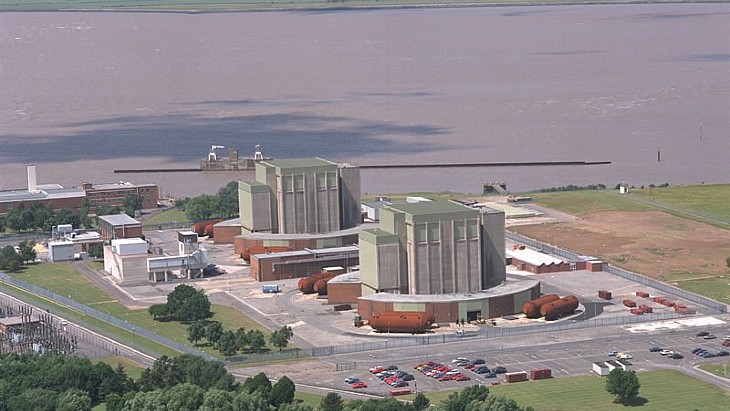A GBP30.8 million (USD38.8 million) contract has been awarded to Altrad for the design, asbestos removal, deplant, demolition and construction works. Altrad will be supported by other Celadon Alliance companies including Veolia KDC Decommissioning Services, NSG Environmental, OBR Construction, Mammoet and Cavendish Nuclear.
Nuclear Decommissioning Authority operating company Nuclear Waste Services was also awarded a GBP13.7 million contract to manage 2400 tonnes of metallic waste.
Magnox Programme Delivery Director Ross McAllister explained that "the blower houses circulated gas through the reactors to transfer heat into 310-tonne boilers to create steam to turn the turbines and generate electricity. The last of the 15 gigantic metal boilers was transported to Sweden for cleaning, smelting and recycling in 2013. The buildings will be emptied of the residual metallic low-level waste and undergo a full asbestos clean before being demolished. The work is expected to take eight years to complete and will be another major step forwards in sustainably decommissioning Berkeley site with our supply chain partners".
He added: "This is one of the largest decommissioning projects that the Berkeley site has seen for several years. It was originally planned for the 2070’s so it is fantastic to bring that forward by five decades in our aim to deliver our mission better, faster and even safer."
Carly Sutton, WMS Consultant and Magnox Relationship Manager, for Nuclear Waste Services said: "Removal of legacy metals from the Berkeley blower houses is significant not only in terms of achieving hazard reduction, but also good for environmental performance - as the high-quality steel removed will be treated, recycled and returned to the metal market for reuse." Supply chain parter Augean says that following treatment at its sites more than 95% of the metal will be decontaminated enough to allow recycling.
Kevin Williamson, Altrad’s General Manager for Magnox, said: "We are delighted to have secured this major decommissioning contract at Berkeley which encompasses the retrieval and cleaning of the primary circuit ductwork and miscellaneous steelwork from the blower houses, prior to their demolition - including the processing of the spring hangers from the lubrication pits, which need to be de-energised and made safe before they can be cleaned.”
Berkeley's two Magnox units were shut down in the late 1980s after more than a quarter of a century of electricity generation. In 1992, Berkeley was the first Magnox site to complete defueling and later became the first to decommission its fuel storage ponds.
In 2010, after 21 years of decommissioning work, the units became the first to be sealed up and placed in 'safestor', a passive state in which the defuelled and extensively decommissioned units will be monitored and maintained until the site is completely cleared in about 65 years' time.
The Berkeley site housed some 620 tonnes of metallic fuel element debris and 6665 containers - some of which are sludge cans - in three underground vaults. A single silo houses charge rods and the chutes used to discharge fuel from the site's two Magnox reactors.
Earlier this year the first concrete box containing radioactive waste from underground vaults at the Berkeley plant was transferred to an interim on-site storage facility.





_18570.jpg)
_16159.jpg)
_49205.jpg)
_18938.jpg)





